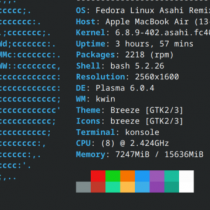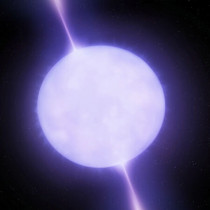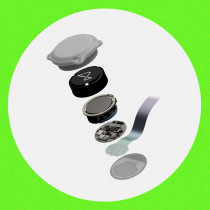Storage Devices Could Get a Whole Lot Cooler
With 3-D devices and holograms on the horizon, storage will never be the same. Floppy discs, CD-ROMs, DVDs -- it seems that every time a better way to store your data comes along, you just get more data to fill up all the extra space. And now that people are increasingly looking for places to keep their digital music downloads -- and maybe soon their digital movies -- it's not hard to imagine that even the mighty DVD will one day join the floppy on the scrap heap of storage devices.
While current data storage technology continues to advance, optical storage solutions (like DVDs) and their magnetic storage counterparts (like computer hard drives) share the same limitation. They both try to cram as much information as possible onto a two-dimensional space. Hard drives encode data on a magnetic disc, and DVDs store it in pits and dashes that a laser can read from one or two layers of plastic. Since the laser is reflected off the surface of the DVD, it is not feasible to make a DVD with more than two layers (four, if it's double-sided). But there is another approach. As Hans Coufal, head of the holographic data storage project at IBM's Almaden Research Center, points out in his German accent: ?It is only natural that we explore the third dimension.?
Storing data in three dimensions instead of two would increase the capacity of a storage system exponentially. The ultimate 3-D storage technology would be holograms, but those exist only in labs. (We'll return to Coufal and his holographic experiments in a moment.) A more practical alternative based on current DVD standards is fluorescent multilayer disc (FMD) technology, which is being developed by a small research company called Constellation 3D.
You can't make DVDs with more than two layers because the light scatters everywhere and causes too much interference. An FMD, by contrast, fills the pits -- which would ordinarily reflect the light of the DVD's laser -- with a special fluorescent dye that emits a different wavelength of light when hit by the laser. Since there is no reflection to worry about, an FMD can have as many as 10 layers. That means it could hold 40 gigabytes of data, compared with 8.5 gigabytes for a one-sided, two-layered DVD and a mere 650 megabytes for a typical CD. And, in theory, FMDs could be made with up to 100 layers,.
One of the first applications for FMDs could be as a digital replacement for reels of film currently sent out to theaters. The FMD technology could also be incorporated into smaller forms, such as cards that would fit into digital cameras or video recorders. A typical 64-megabyte flash card for a digital camera today costs more than $100. An FMD of the same size would be able to store more than 10 times as many pictures and could potentially cost less than $10, according to John Ellis, VP for marketing at Constellation 3D. The company is trying to license its technology to larger manufacturers of optical discs and drives. While its technology looks promising, financially it can use all the help it can get. Constellation 3D lost $5 million last quarter on zero revenues and has enough cash to last only through the end of the year. But it is currently trying to raise money with another round of financing.
The ultimate 3-D storage technology, however, is holograms. The system that Coufal and his team are trying to develop stores tiny holograms in a 1-square-centimeter crystal that can be read by a digital camera. Each hologram represents a picture of a page with black and white dots that correspond to digital 1s and 0s (just like the pits and dashes on a DVD). Every page contains 1 million pixels, or 1 megabit of information, and it is possible to store 250,000 such pages per square inch of holographic medium used (usually lithium niobate). ?The storage medium is about the size of a sugar cube,? Coufal explains, ?and we store information in these sugar cubes.? That translates to 250 gigabits per square inch, which is exponentially more storage space than even FMD technology could provide.
Still, a lot of kinks have to be worked out to make holographic data storage systems economical enough to manufacture and reliable enough for commercial use. Coufal is working on the problem at IBM (IBM). And the folks at InPhase Technologies, a spinoff of Lucent Technologies, are working on it as well. Until then, let's hope Constellation 3D gets more funding.









































































